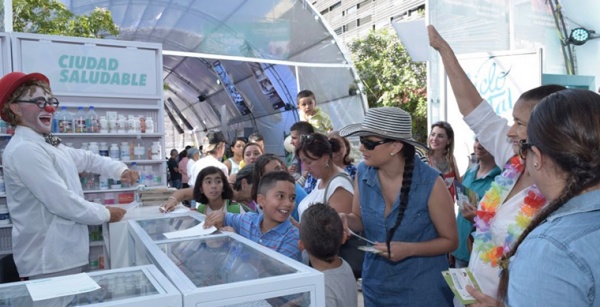Medellin: A Healthy City for living
In 2012 Medellin opted for a model of city management that involves the protection and preservation of life as a fundamental objective, considering equity as the way to achieve it. One of the five pillars of the management model is Healthy City, a strategy that seeks to promote living with dignity, sustainability and quality, developing articulated and intersectoral actions that go beyond the health sector. The key to Medellin’s advancement in the process of improving health in everyday life has been the permanent joint actions of the University, the private sector and the different sectors of government.
Meets the criteria established under Health in All Policies:
- Political commitment. There is political commitment from the Mayor that is reflected in the development plan for Medellin 2012 -2015, "Medellin a home for life". The initiative "Healthy city Medellin “ was also adopted in the 2012-2015 municipal health plan. The commitment is part of the new national development plan and the ten-year plan of public health of the country.
- Structure. It does not have its own structure. It is structured by the Mayor’s office and within the Ministry of Health to develop this initiative. The project’s growing intersectoral coordination has increased in complexity. Therefore, in 2015 it was necessary to create an intersectorial working group with the most representative private and public actors of the city, including civil society.
- Participation of other sectors. Leadership has been held by the Ministry of Health of Medellin and the University of Antioquia. They have promoted the recognition of this strategy in the city and actively participated in the construction of public policy. The positive intervention of such policies is recognized in the health and quality of life of the population. The involvement of other sectors has been particularly important in the areas of mobility , education, security , community , academia and the private sector, as well as intersectoral work within the Municipal Government. In 2014, as an example of this joint work an alliance to work for a healthy city was consolidated between the University of Antioquia, the Suramericana business group and the Mayor of Medellin. In 2015, the intersectoral working group was constituted with the involvement of more actors and sectors .
- Separate budget. It has its own funding. The development of the actions in each environment, each sector and actor defines its budget considering their purposes and current regulations. Furthermore, it calls on the private sector so that the social investment of businesses adds to the achievement of a Healthy City.
- Focus on reducing inequity. Both the 2012 -2015 Development Plan and the Municipal Health Plan proposed interventions from all sectors for reducing inequity prioritizing the most vulnerable populations and territories. The investment of public funds is higher in regions with lower rates of quality of life in the city.
- Intersectoral action. The strategy is based in intersectoral action. An example is the Healthy Start program, a comprehensive intervention aimed at children between the ages of 0 and 5 years. With leadership from the education sector, it joins the work of Health, Inclusion, Recreation and Sports, as well as the private sector.
- Public Policy. The project has developed public policies that impact health as in the case of the joint effort between the health sector and the urban planning teams. The result was a Zoning Plan with a focus on a healthy city, prioritizing life and its people.
- Evidence of results. The strategy originated from an investigation that analyzed the relevance and challenges of the Healthy City initiative, searching for an appropiate model for Medellin. It was until 2015 that it started to formally build a set of indicators and a monitoring system under the strategy of healthy city. The analysis of some traditional indicators show positive impacts on health over the past four years : the reduction of infant mortality, no deaths in children under five years caused by malnutrition, intervention to decrease the cases of teenage pregnancy and having more than 95 % of health coverage.
- Social Participation. It has had social participation along the process for instance, in the construction of the vision of the city, the definition of Medellin as a Healthy City, and in the prioritization of actions, among others. During this period (2012-2015) there have been more than 40 meetings with different actors of civil society: panels of experts, community meetings, ongoing surveys, accountability, and workshops with social organizations, among others.

